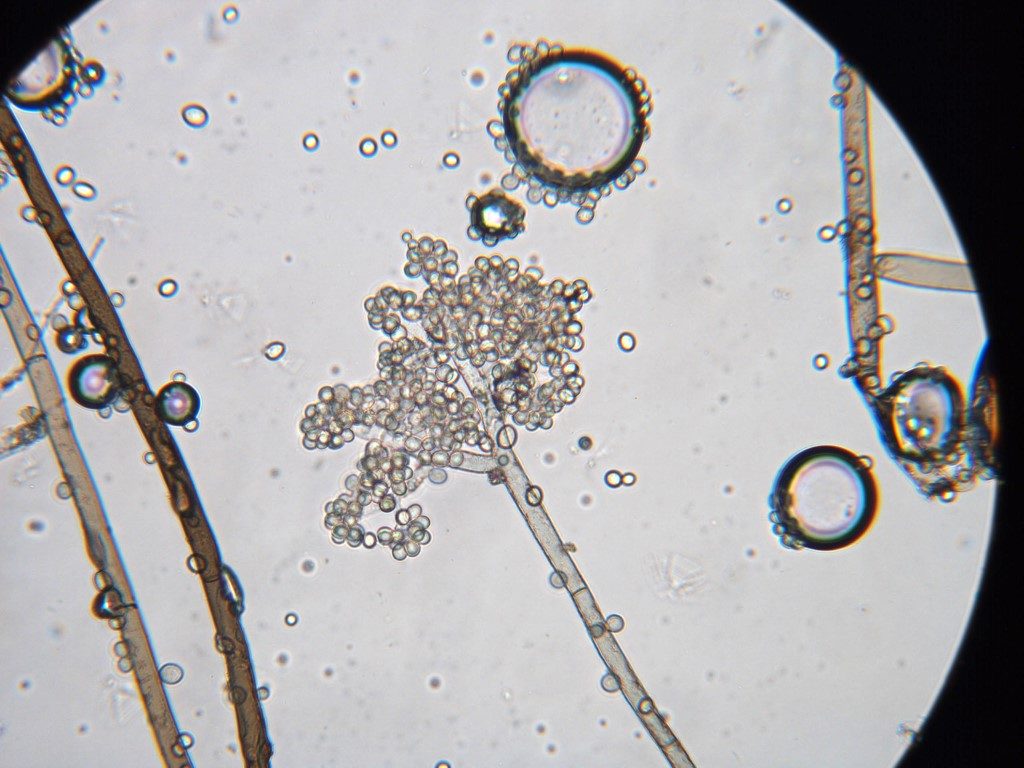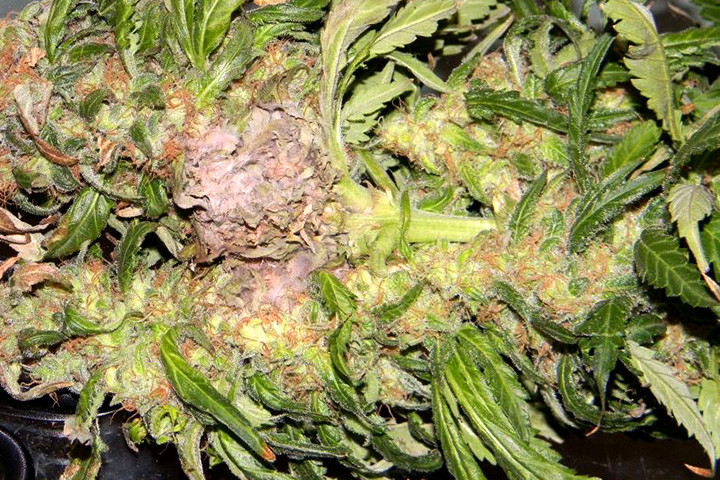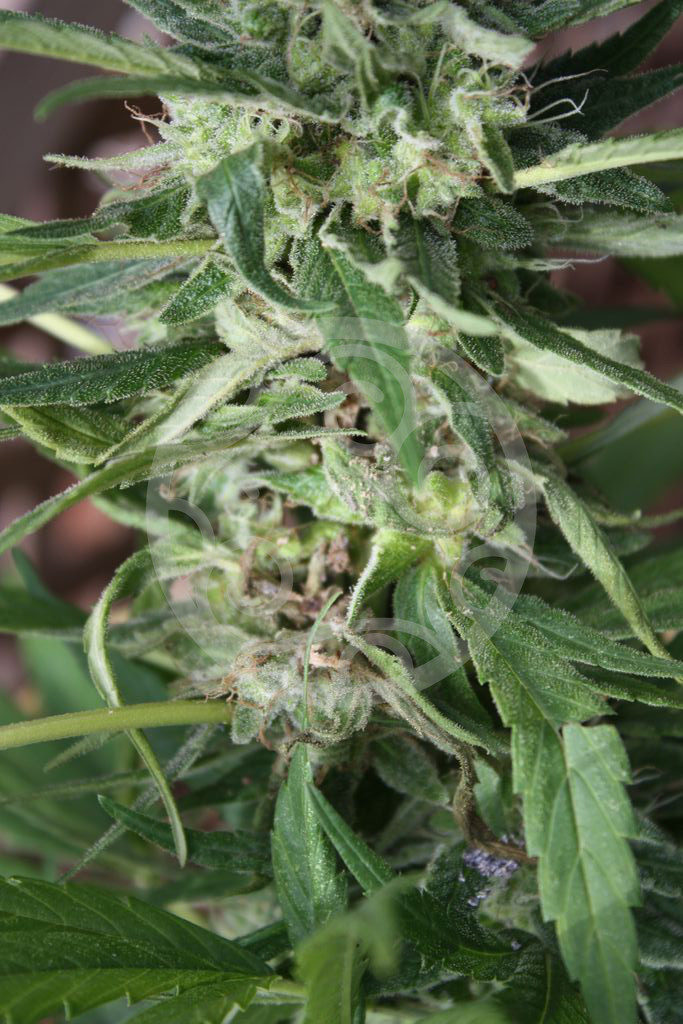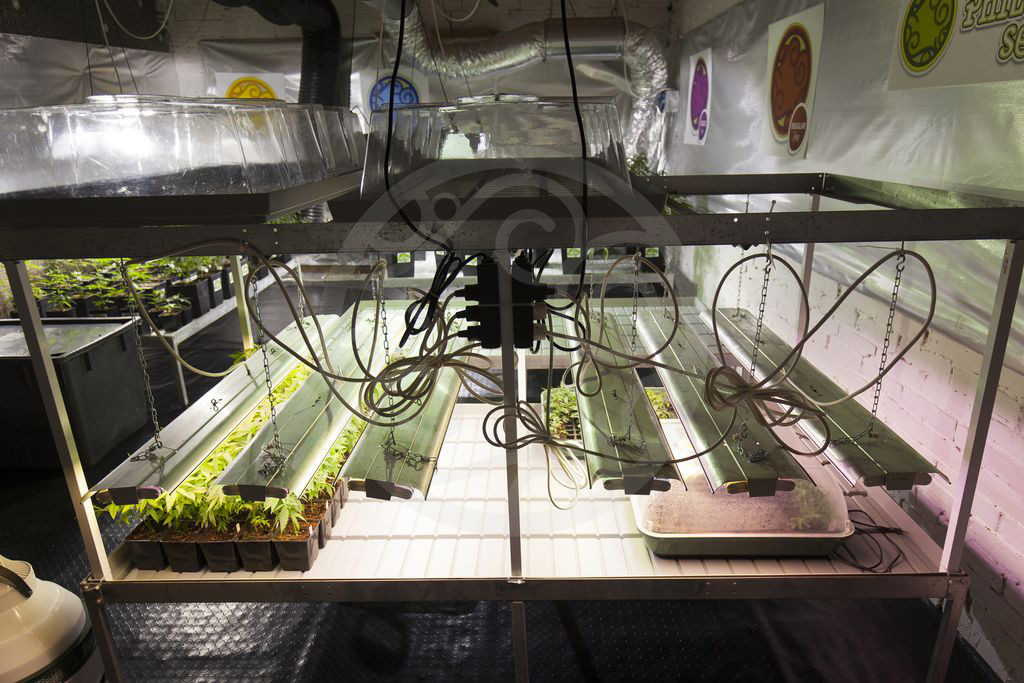Botrytis on marijuana plants
List of contents
Botrytis - also known as gray mold, bud mold or bud rot - is a genus of fungus which attack a vast number of plants (around 200 varieties can be infected). Along with powdery mildew, Botrytis cinerea is one of the most commonly found fungus on marijuana plants, especially outdoors, so now that our plants are about to bloom we want to remind you a few tips to avoid it. If we lower our guard and propagation conditions are optimal, an infection of botrytis can quickly ruin our harvest right at the moment when our plants are in full bloom.
Botrytis can reproduce sexually or asexually, feeding on tissues of the host plant. There are 22 species and a hybrid among the Botryotinia genus; the one that interest us, called Botrytis cinerea, is actually used in vineyards to produce noble wines of excellent quality, since this fungus increases sugar levels on grape and highly improves the organoleptic features of the wines produced from it. Let’s see now how to identify, prevent and treat an infection of Botrytis.

Botrytis on outdoor cannabis plants
Normally, botrytis only represents a problem for outdoor marijuana plants in full bloom, and is relatively rare to see it in indoor grow rooms. Outside, botrytis can grow due to several reasons, although the main ones are rains and caterpillars. During summer, which is normally a dry and hot season, we don’t usually observe botrytis on plants. However, at late summer and early autumn, when cannabis plants are in full bloom, rains can seriously threaten our buds especially if number of factors are met: plants almost ripe, rains that persist for several days, poor air circulation or high humidity levels can quickly ruin our efforts of the past months.
Some growers cover their plants when autumn rains begin using greenhouse plastic and a simple structure so plants don’t get wet due to rains or dew. We can find different preventive products on the market for this fungus, either organic or chemical. We recommend using an organic preventive during the beginning of the flowering stage, especially if the plants are located on a humid/rainy area. The drying process of our outdoor harvest can bring the same problems than we can find in indoor grows, so keeping a moderate humidity level in the drying room is essential.

Another possible source of infection are caterpillars, a true classic in many gardens during autumn. Apart from the damages caused by their eating action (twisted leaves, drilled buds, etc) they literally drill our buds, so that rains or dew fill the orifices left by the caterpillars and enable the development of botrytis. The typical symptoms of an infection of botrytis are bud rot, which acquires a brown/grey colour and completely changes its texture, which becomes cottony and brittle. A typical early symptom are whitered bud leaves: if we remove the bud, we’ll probably see botrytis between the main stem and the flower. In this case, we should remove all infected buds and immediately treat the plant with some fungicide product, provided that we’re still on time (we don’t recommend any treatment if plants are about to be harvested).
Thus, our best option to avoid these situations is always using a preventive against caterpillars during summer (dor example, with Bacillus Thuringiensis) and until our plants end the pre-flowering stage. It is important to remember that this is a preventive action (directly against caterpillars and indirectly against botrytis) so we must use the product even if we don’t see any caterpillar on our plants (BT is especially efficient against larvae, not to eradicate adults).

Botrytis on indoor marijuana plants
Unless temperature and especially humidity and air renovation conditions are really poor, it is rare to find botrytis on indoor plants. If we do find it, it will be probably caused by excessive environmental humidity and/or poor air circulation inside the grow room. This can be easily fixed by using the appropriate air extractor fans for the lighting systems and the volume of our grow room.
Once we harvest our plants we can’t yet relax, for they could develop botrytis during the drying process. That’s why we recommend to carefully check the humidity level inside the drying room and never let it raise above 50-60%. Proper air circulation inside it is also advisable. Many growers use small grow tents with the corresponding fan and carbon filter; in this way, they enable proper air circulation while filtering the intense smell of the plants.

Prevention and management of botrytis
To avoid botrytis infections – or to keep them under control – we must remember these factors:
- Choosing the right strain to grow. Easy Haze, Amnesika 2.0 and Early Maroc are particularly resistant to molds
- Keeping humidity levels below 60%
- Correct air circulation
- Use some organic preventive periodically
- Remove dead plant matter and keep the garden clean
- Use Bacillus Thuringiensis until the plants start developing buds to get rid of caterpillars
- Whenever possible, cover your plants to avoid rains and dew
- Remove any infected part of the plant
- Avoid plants with very compact buds, especially if you live in humid areas
- Leave enough space between plants
- Do not over-water your plants at the end of the bloom stage
We hope that these tips will help you to keep botrytis away from your garden, since it is really frustrating to see the efforts and time invested on our plants ruined when they are almost ripe.
Do not hesitate to leave any doubt or comment, we'll be pleased to reply them!
Happy harvests!







